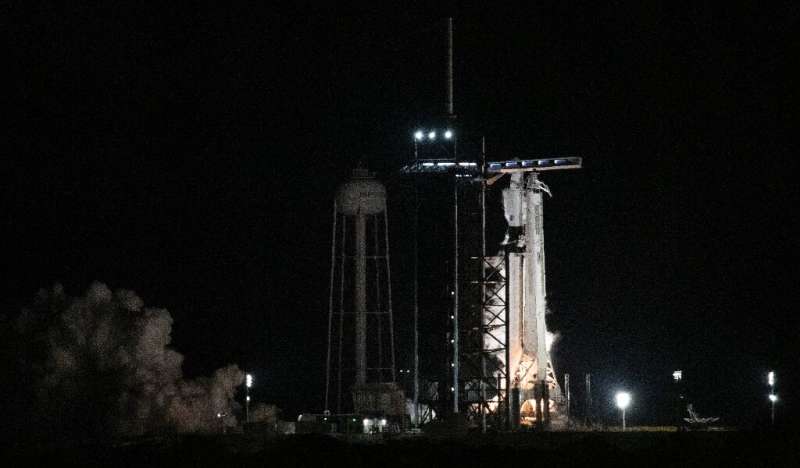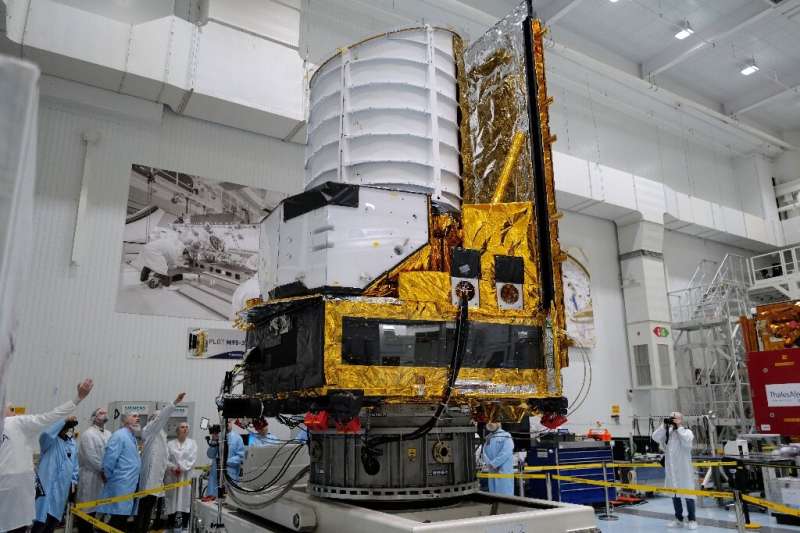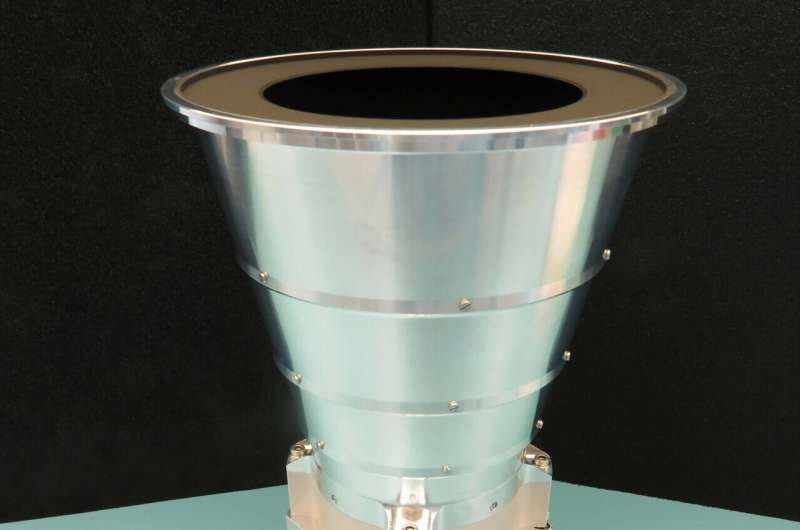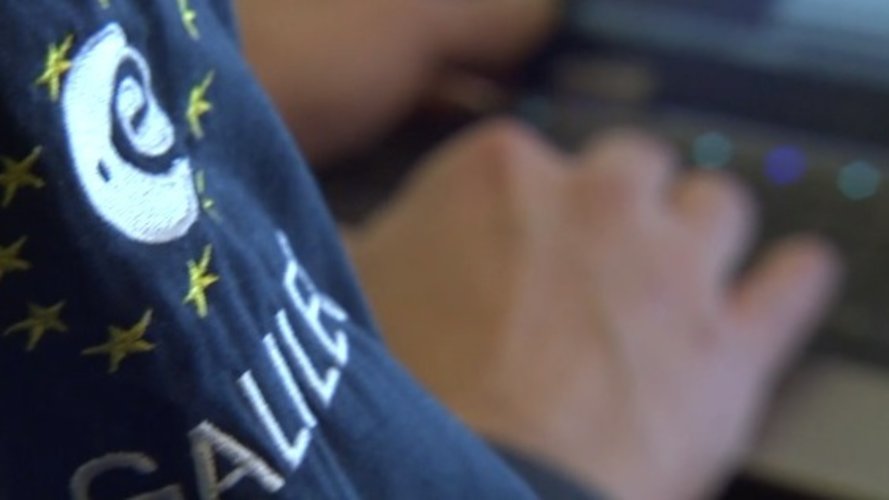
Copernical Team
Starliner crew performs cabin operations, checks out tools
 NASA astronauts assigned to the Starliner's upcoming Crew Flight Test (CFT) completed the first part of a two-part Crew Equipment Interface Test (CEIT) this week. CEIT is a critical milestone for NASA, Boeing and the International Space Station program, typically conducted about two months prior to launch. It gives astronauts the opportunity for hands-on training with the actual tools, equipment
NASA astronauts assigned to the Starliner's upcoming Crew Flight Test (CFT) completed the first part of a two-part Crew Equipment Interface Test (CEIT) this week. CEIT is a critical milestone for NASA, Boeing and the International Space Station program, typically conducted about two months prior to launch. It gives astronauts the opportunity for hands-on training with the actual tools, equipment SpaceX Dragon crew to blast off for ISS

A SpaceX Falcon 9 rocket is to blast off early Monday for the International Space Station carrying two NASA astronauts, a Russian cosmonaut and the second Emirati to voyage to space.
The SpaceX Dragon Crew-6 mission is set to lift off from the Kennedy Space Center in Florida at 1:45 am (0645 GMT). Weather conditions are expected to be near perfect.
The Crew Dragon capsule, dubbed Endeavour, is scheduled to dock with the ISS at 2:38 am (0738 GMT) on Tuesday if all goes as planned.
NASA's Stephen Bowen and Warren Hoburg, Russia's Andrey Fedyaev and Sultan al-Neyadi of the United Arab Emirates are to spend six months on the orbiting space station.
Neyadi, 41, will be the fourth astronaut from an Arab country and the second from the oil-rich United Arab Emirates to journey to space; his countryman Hazzaa al-Mansoori flew an eight-day mission in 2019.
Russian ship docks with ISS to replace damaged capsule

An uncrewed Russian Soyuz capsule docked early Sunday with the International Space Station and will eventually bring home three astronauts whose initial return vehicle was damaged by a tiny meteoroid.
The MS-23 ship autonomously latched to the orbiting research lab, live video from ISS-partner NASA showed, completing the Soyuz's two-day journey after launching off from Kazakhstan.
It is expected to bring home US astronaut Frank Rubio and Russian cosmonauts Dmitry Petelin and Sergei Prokopyev in September.
The three arrived at the ISS last September aboard MS-22, and were originally only supposed to stay about six months, until the end of March.
But their capsule began leaking coolant in mid-December after being hit by what US and Russian officials believe was a tiny space rock.
Roscosmos, the Russian space agency, decided to send MS-23 to replace the damaged vessel, but without its own three planned crew members.
With no one to replace them, Rubio, Petelin and Prokopyev will now spend almost a year in space.
The damaged MS-22 is expected to depart the space station without passengers and return to Earth in late March.
New study offers insight into how Venus cools
 Large geological patterns on Venus, called Coronae, may provide answers to how the planet releases heat, according to a research study from scientists at NASA's Jet Propulsion Laboratory.
On Earth, the planet's core heats the surrounding mantle which then conveys heat to the outer layer or lithosphere, where it then radiates out into space, causing the Earth's mantle to cool, driving th
Large geological patterns on Venus, called Coronae, may provide answers to how the planet releases heat, according to a research study from scientists at NASA's Jet Propulsion Laboratory.
On Earth, the planet's core heats the surrounding mantle which then conveys heat to the outer layer or lithosphere, where it then radiates out into space, causing the Earth's mantle to cool, driving th ULA's Vulcan Centaur rocket is flying for the first time in May
 Vulcan Centaur was supposed to blast off in the first quarter of this year. During a press conference on February 23, United Launch Alliance (ULA) President and CEO Tory Bruno stated, "We are now targeting the fourth of May, so we plan our manifest around that and be ready to fly that payload when it comes in."
The long-awaited inaugural flight of the new Vulcan Centaur rocket is targeting
Vulcan Centaur was supposed to blast off in the first quarter of this year. During a press conference on February 23, United Launch Alliance (ULA) President and CEO Tory Bruno stated, "We are now targeting the fourth of May, so we plan our manifest around that and be ready to fly that payload when it comes in."
The long-awaited inaugural flight of the new Vulcan Centaur rocket is targeting Russia's uncrewed Soyuz rescue spacecraft docks with ISS
 A Russian spacecraft docked with the International Space Station on Saturday to replace one that leaked coolant after it was struck by a meteoroid last year, stranding two cosmonauts and a NASA astronaut in space.
"Contact and capture. Docking confirmed at 6:58 p.m. CST," NASA spokesman Robert Navias said during a broadcast of the mission. "It could not have gone smoother from launch to
A Russian spacecraft docked with the International Space Station on Saturday to replace one that leaked coolant after it was struck by a meteoroid last year, stranding two cosmonauts and a NASA astronaut in space.
"Contact and capture. Docking confirmed at 6:58 p.m. CST," NASA spokesman Robert Navias said during a broadcast of the mission. "It could not have gone smoother from launch to Euclid spacecraft prepares to probe universe's dark mysteries

For now, Europe's Euclid spacecraft sits quietly in a sterilized room in the south of France, its golden trim gleaming under the fluorescent light.
But in a few months the space telescope will blast off on history's first mission to search for two of the universe's greatest mysteries: dark matter and dark energy.
Though together they make up 95 percent of the universe, almost nothing is known about either—a glaring hole in scientific understanding that Euclid project manager Giuseppe Racca dubbed a "cosmic embarrassment".
Aiming to shed light on these dark secrets, the European Space Agency's mission will chart a 3D map of the universe encompassing two billion galaxies across more than a third of the sky.
Eyes on Hera: Asteroid mission's cameras ready

MAVEN status update

NASA's MAVEN spacecraft entered safe mode on Feb. 16 after encountering an issue with its Inertial Measurement Unit (IMU), which measures the spacecraft rate of rotation for use in determining its pointing. The IMU had been powered up in preparation for a minor maneuver targeted to reduce eclipse durations in 2027.
On Feb.17, MAVEN exited safe mode and is currently operating in all stellar mode, a mode that does not rely on IMU measurements such that the IMU can be powered off to conserve its lifetime. The maneuver will be waived as the team evaluates the path forward. Relay activities and nominal science operations are scheduled to resume on Feb. 23.
MAVEN launched in November 2013 and entered Mars' orbit in September 2014. The mission's goal is to explore the planet's upper atmosphere, ionosphere, and interactions with the Sun and solar wind to explore the loss of the Martian atmosphere to space. Understanding atmospheric loss gives scientists insight into the history of Mars' atmosphere and climate, liquid water, and planetary habitability.
Provided by NASA's Goddard Space Flight Center
ESA invites you to satnav summer school in Sweden

This year’s ESA/JRC International Summer School on Global Navigation Satellite Systems (GNSS) will take place in July in Kiruna, Sweden.
